Guto Requena is one of Brazil’s most innovative up-and-coming architects. His work is based on the ever-changing world of communication and technology, by reflecting how these new advancements affect us. Drawing from his bucolic childhood in Brazil, Requena creates a world where flexibility and reclamation of materials and objects make the space both simple and comfortable.His projects always push the envelope, redefining both physical and virtual space. With the Google offices in Sao Paulo, for Guto’s next venture, it seems the sky is the limit.
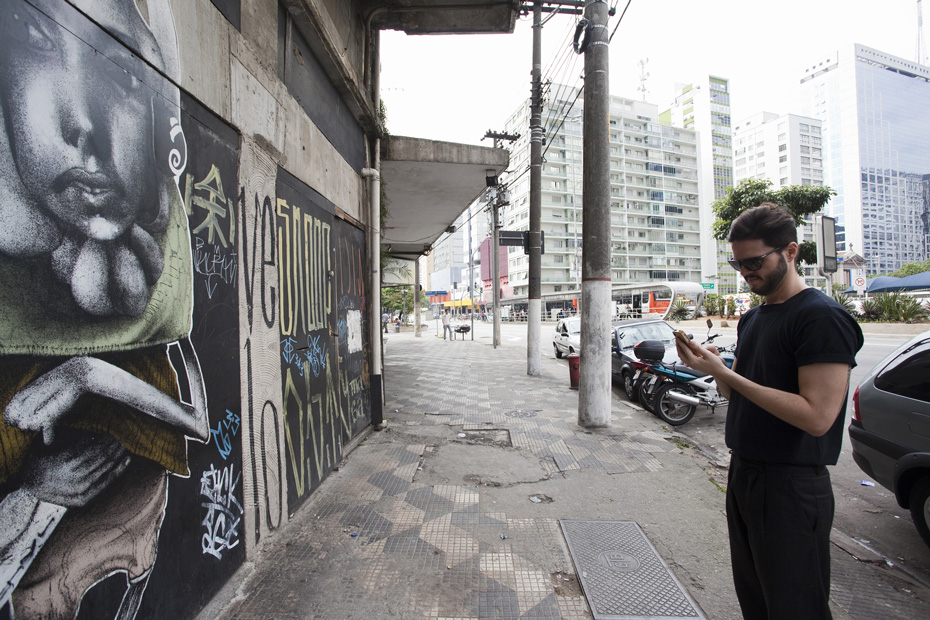
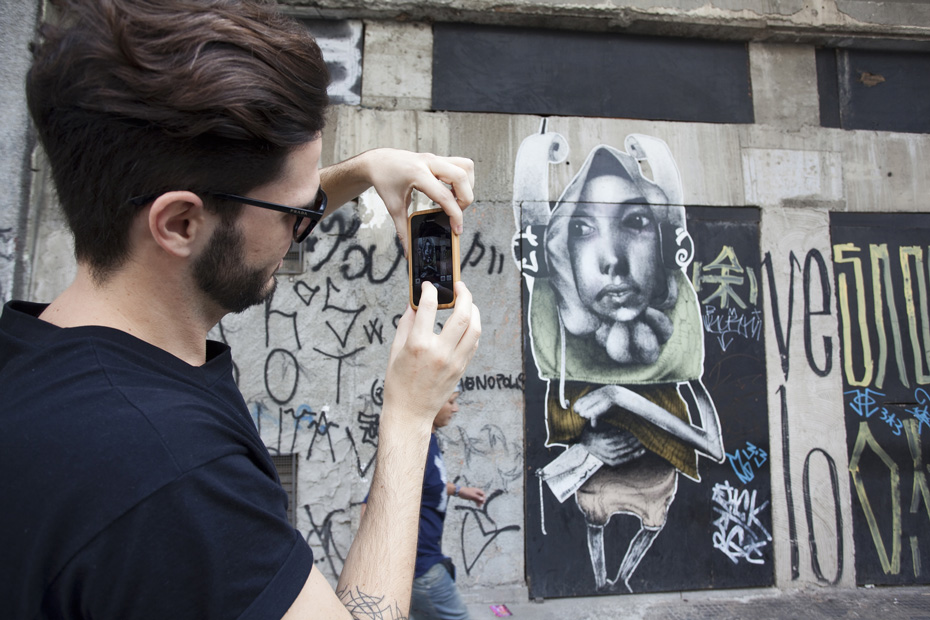
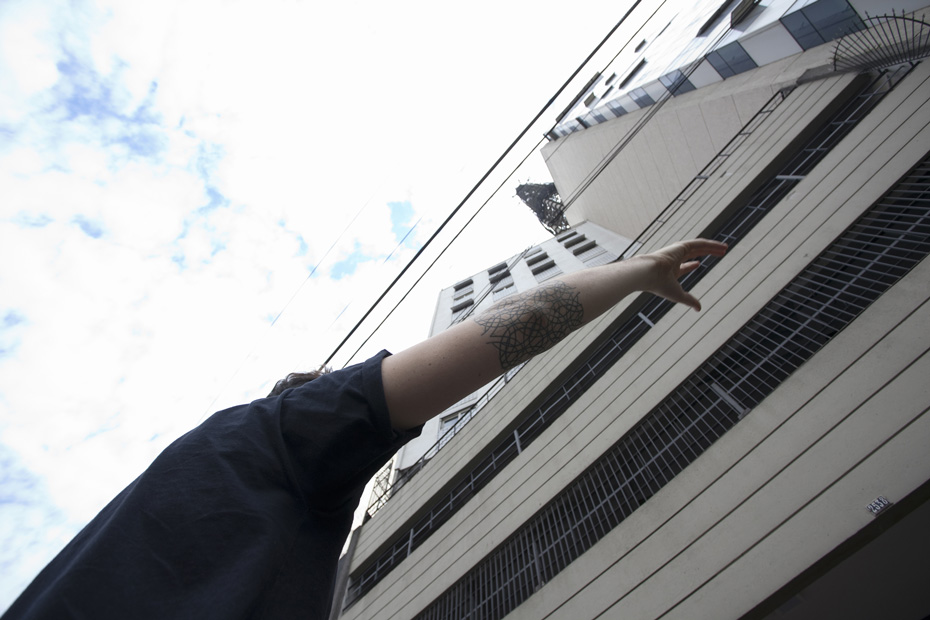
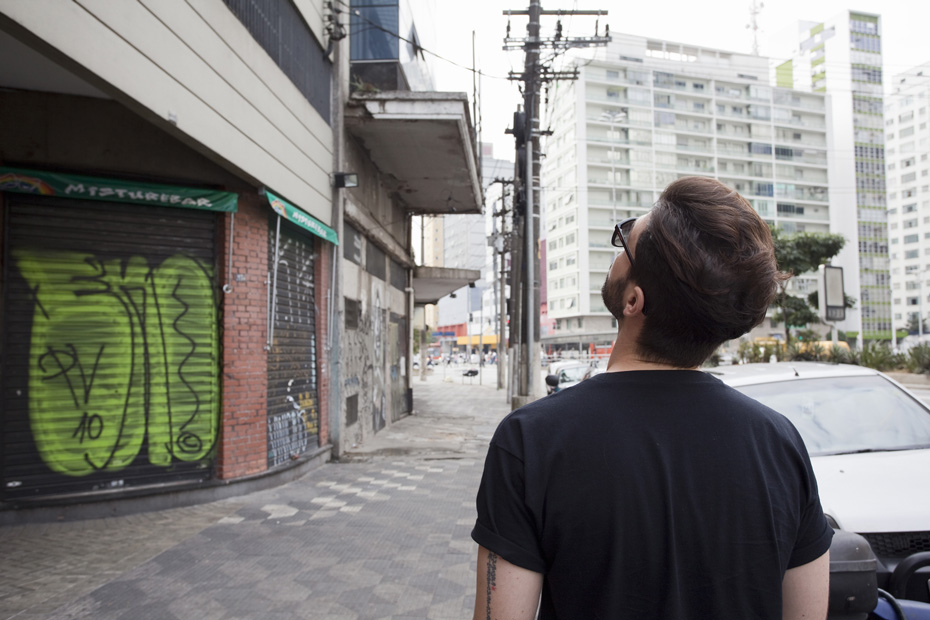
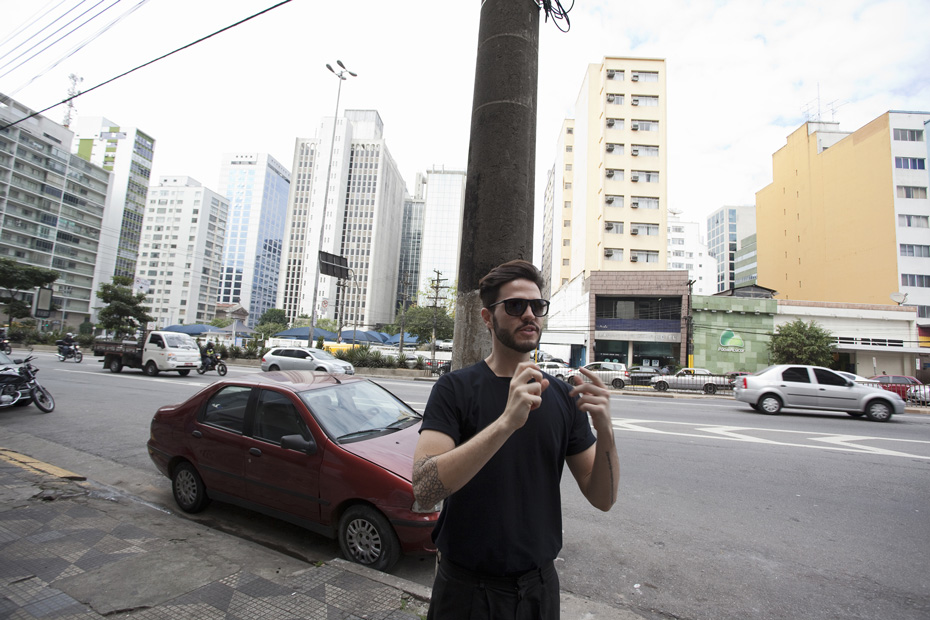
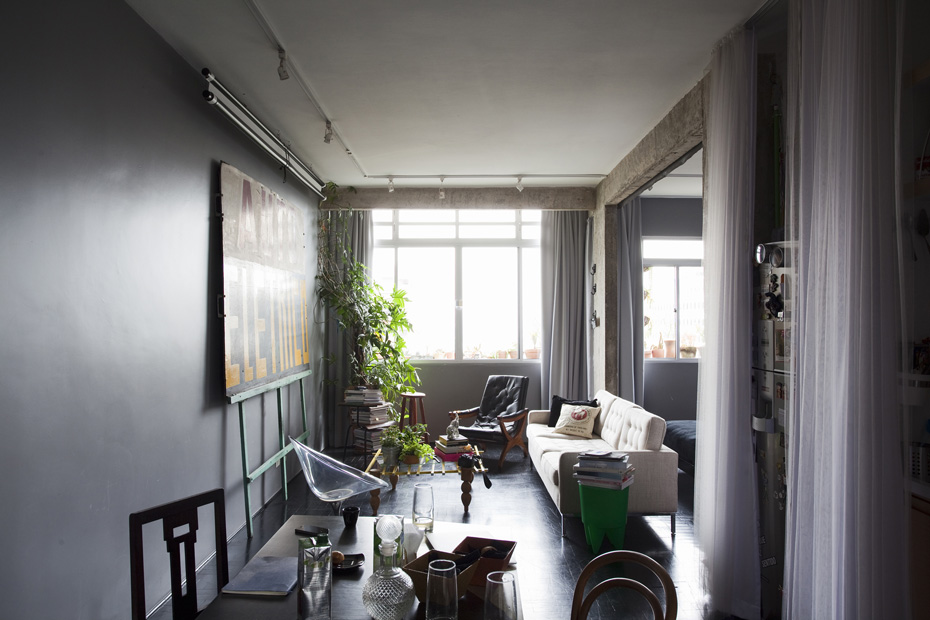
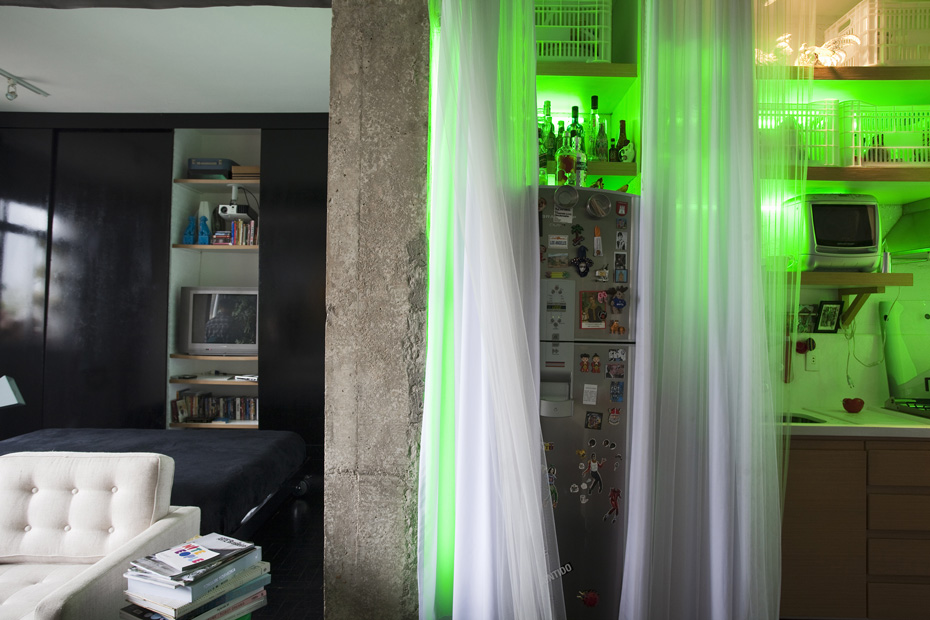
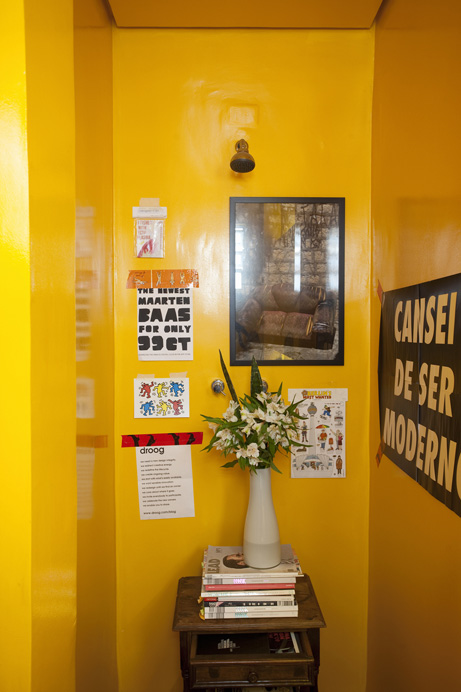
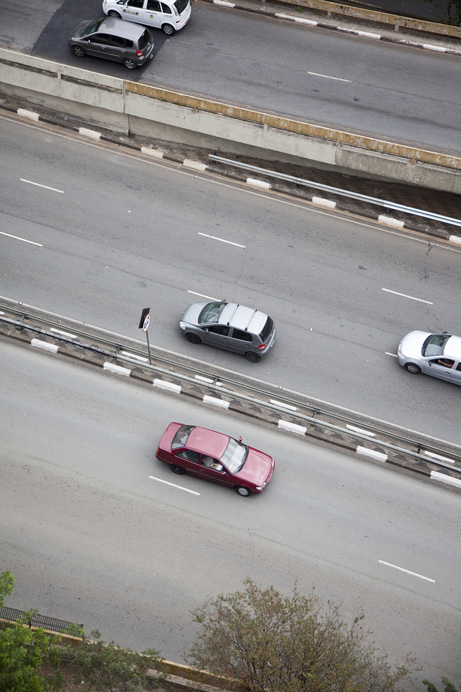
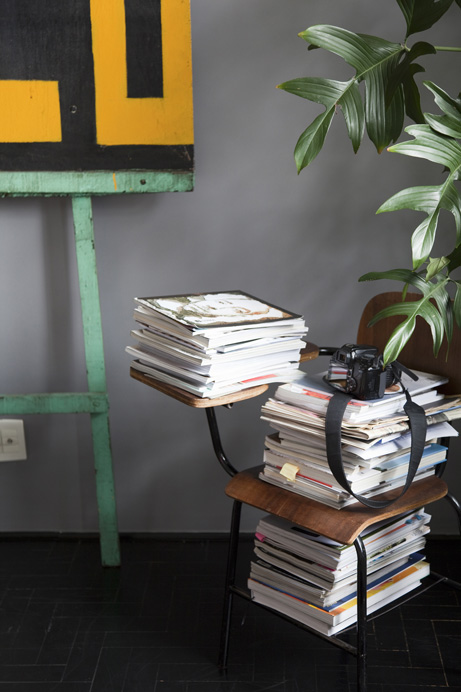
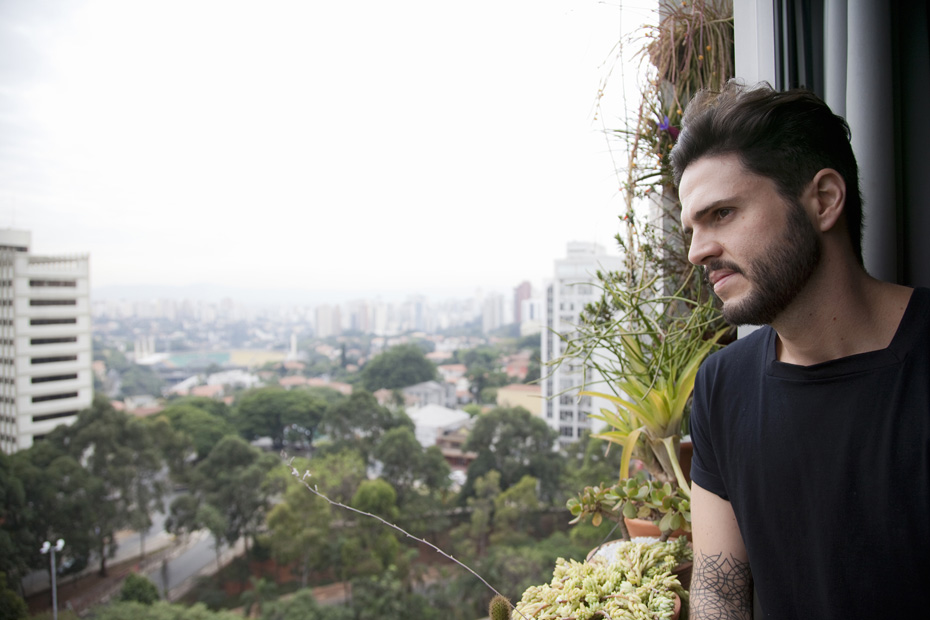
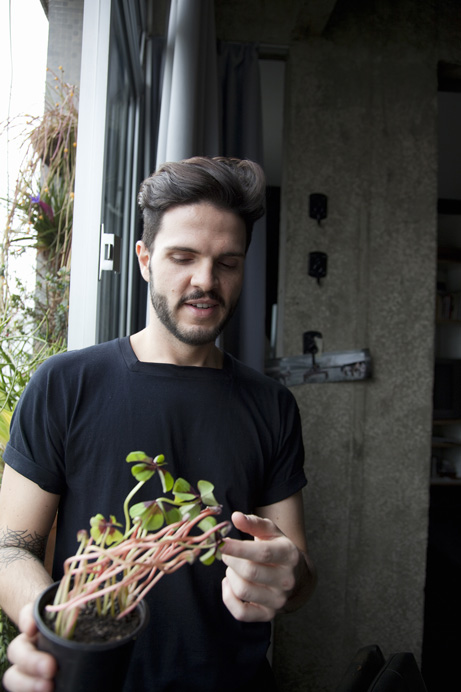
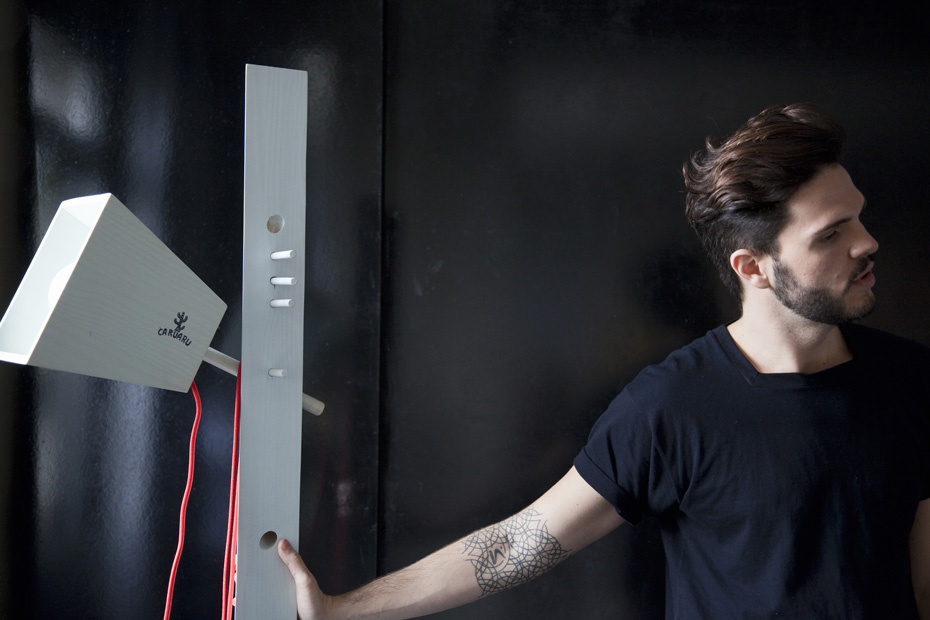
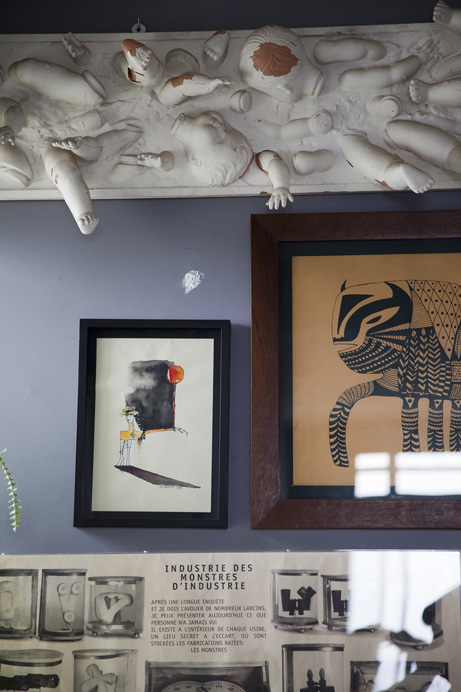
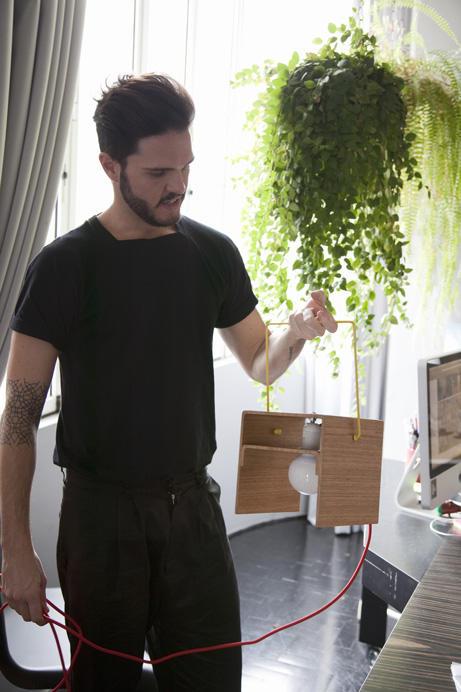
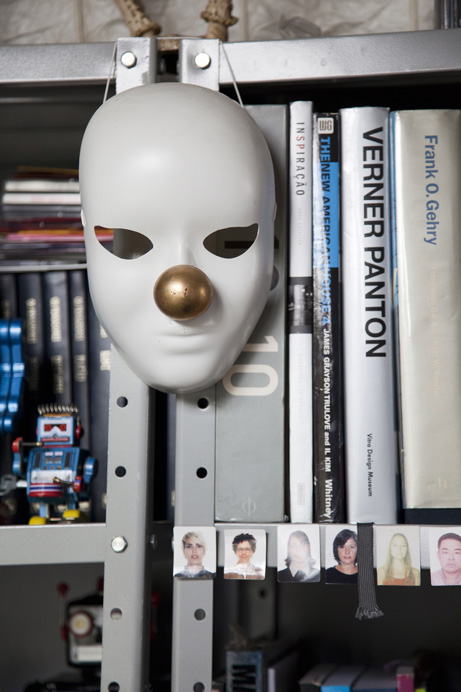
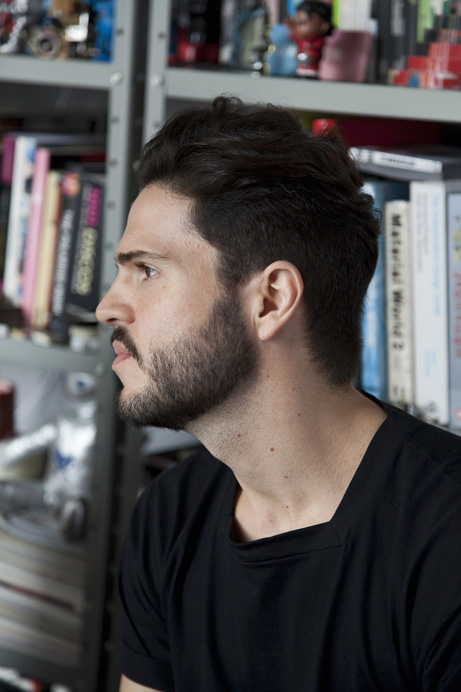
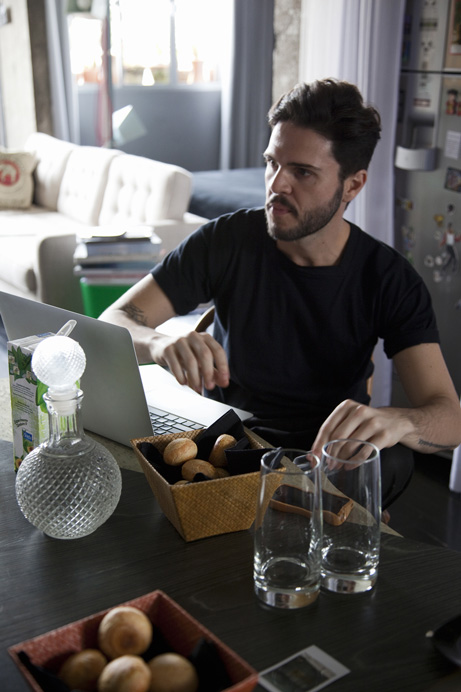
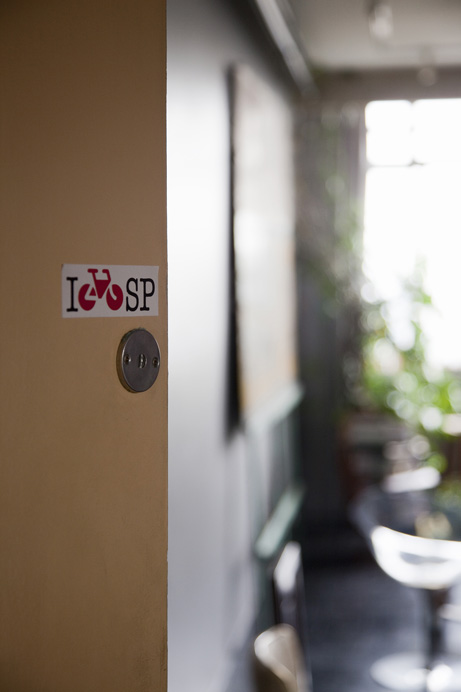
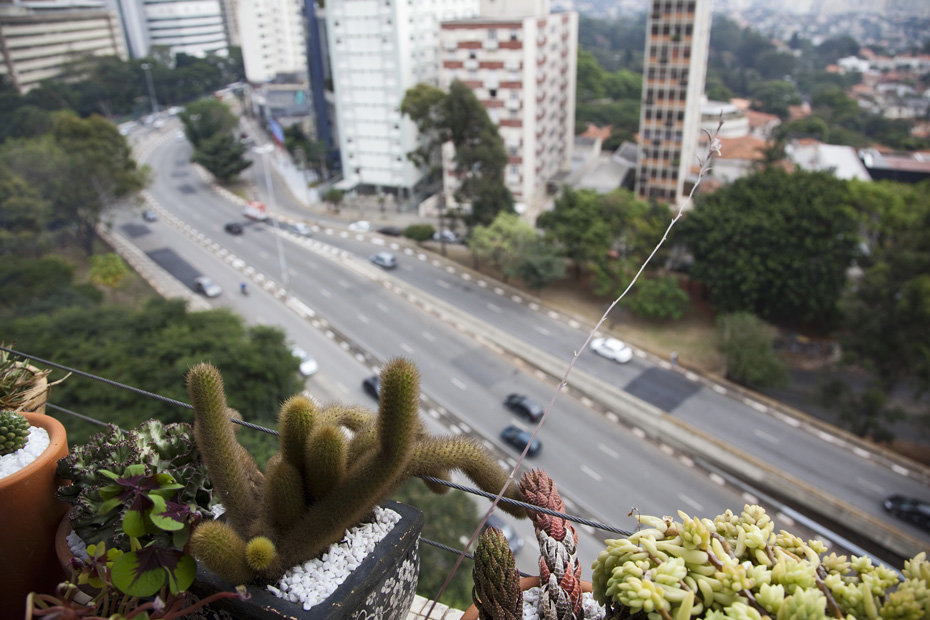
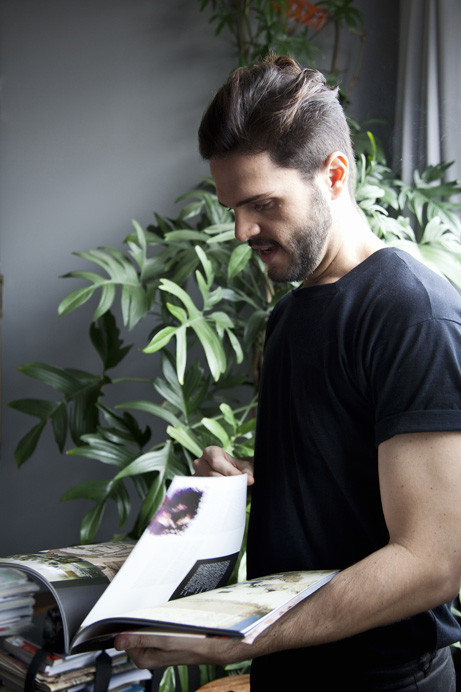
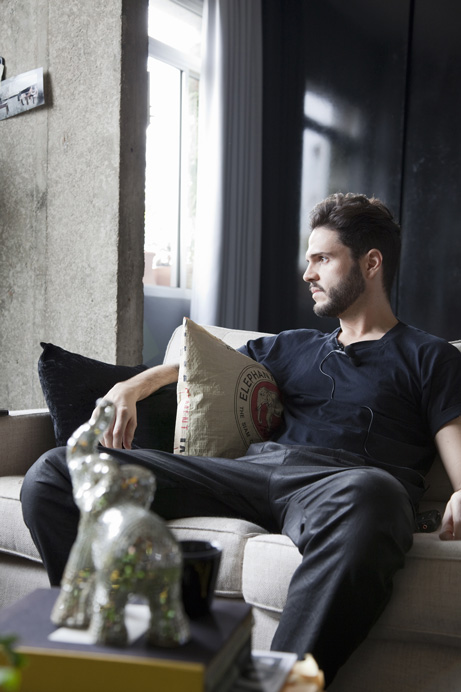

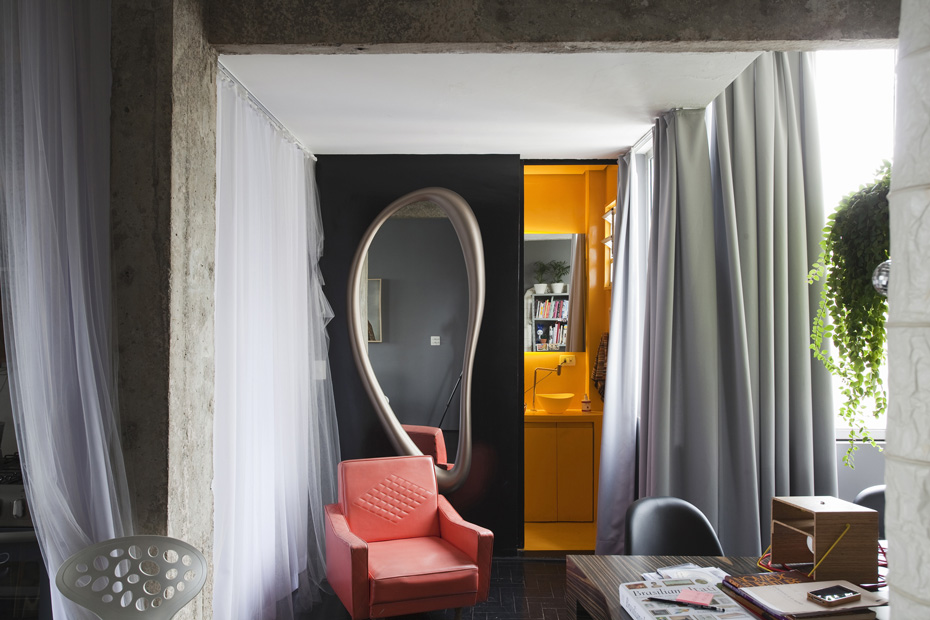

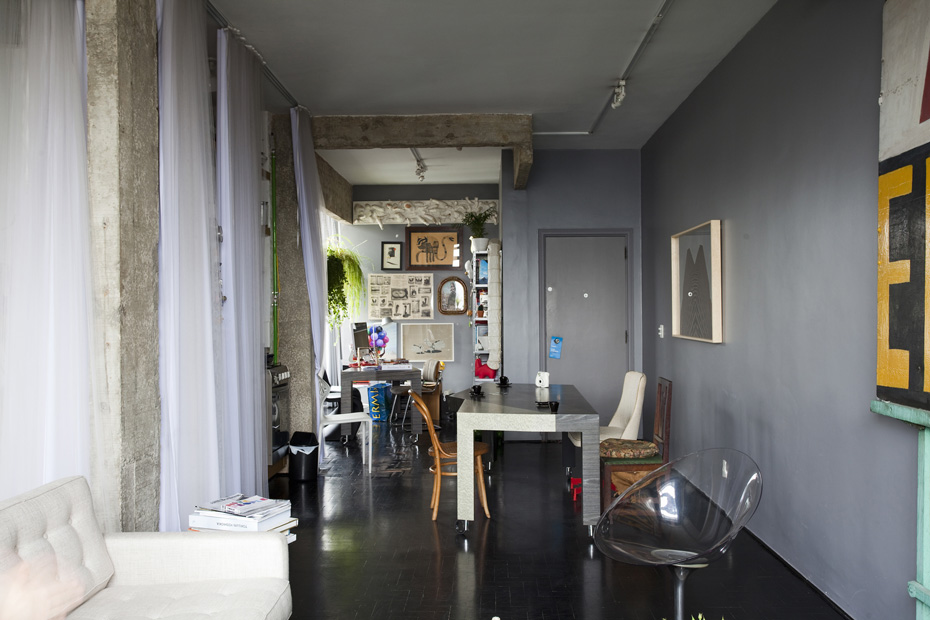
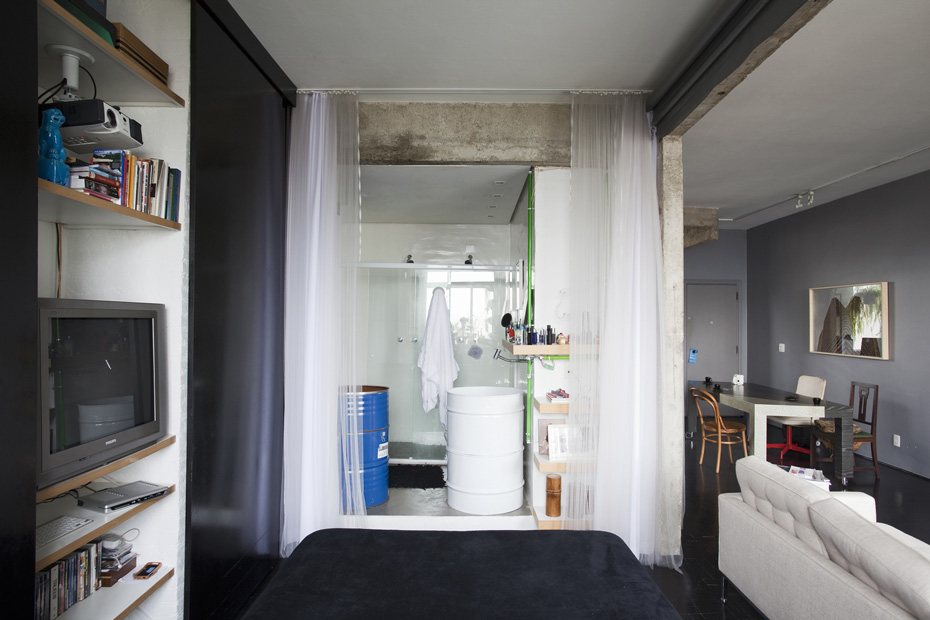
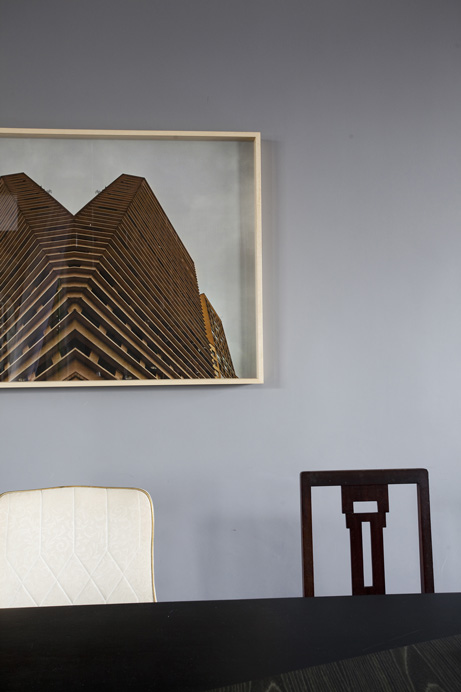
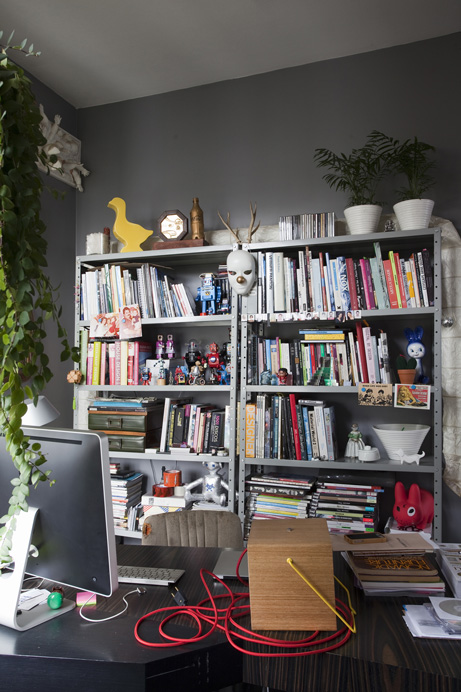
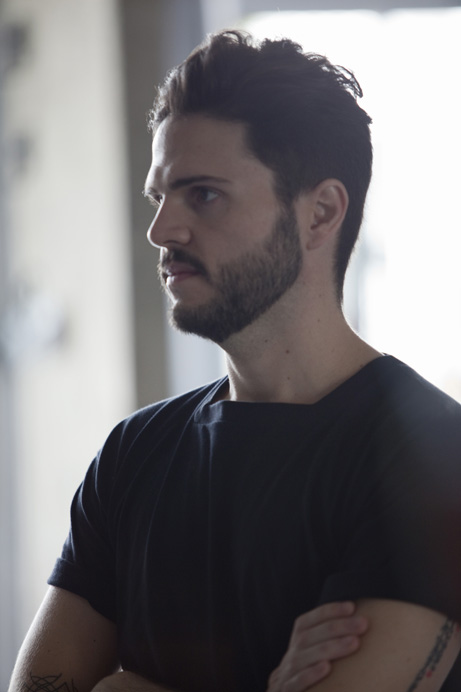
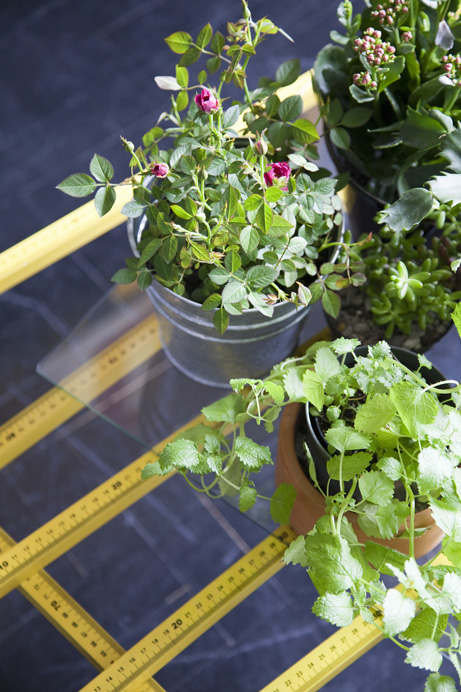
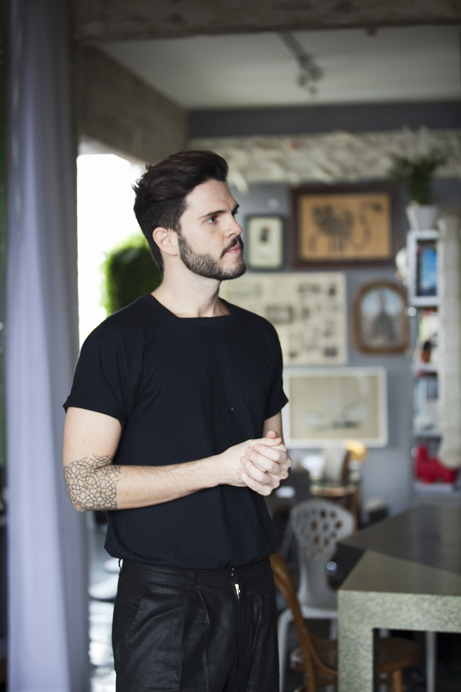
To start off, could you give us a small introduction of who you are and what you do.?
I’m an architect and I’ve been doing research on a project called Hybrid Habitation for almost 10 years. I did my graduate and masters degree in a group called Nomads, which is a kind of center for interactive living in San Carlos where 30 researchers from all over Brazil gather together. The group researches the trends and behavior of digital culture – how cyber culture or digital culture changes our relationship with design and the way we build our cities. In 2007, in order to complete my masters program, I presented two projects – I wrote a book and designed this apartment, which I call the Bohemian Cyborg. I’m very interested in flexibility and multifunctional. In 2008 I opened my studio and began to develop residential houses, commercial buildings and designing furniture.
So you started work right after university. How did you get your first clients? ?
I think I was very lucky because I have amazing friends. I began working on friend’s houses and then getting jobs based on their recommendations. I also knew a lot of people through the academic side of the design world – I was a professor and I gave lectures and workshops all over the country.
For the first couple of years after I started my studio I did more commercial projects, but now I think people are getting to know me a little bit better and I’m starting to do the work that I really want to do. My biggest dream is to create interactive buildings and squares in the city in response to trend behaviors. Contrary to what seems to be the prevalent opinion among South Americans, I believe digital technology can make us closer, can make us better. I’m very optimistic.
I’m also doing a TV show about design, which is beginning to get a lot of attention in Brazil. When I was in the university, I used to think ‘We need to talk more about design and architecture’ because our country is very rich culturally, but we don’t know too much about design and about architecture. It’s very new in Brazil. We have a big problem, in my opinion, which is Oscar Niemeyer. He’s a master and of course everybody loves him, but he’s been doing the same thing for almost 60 years and so young people don’t have a chance to create something new.
So Niemeyer was kind of an icon for all Brazilian architecture? ?
Yes. When I say Niemeyer I am referring to his whole generation. We call them the modern architects from Brazil. They were amazing. They are amazing, but we need something new and fresh and I think we’re finally seeing the beginnings of this trend.
Tell us a little bit about your life before University. What is your family background? How did you get in touch with design for the first time, did you get a sense of it from your parents?
Not at all. I come from the country side outside of Sao Paulo – a town called called Sorocaba. It’s a not a small city though; in Brazil when you say ‘country side,’ you have cities with one million people. I’m very fortunate because I have a really loving family. We spent a lot of time on my father’s farm growing up, surrounded by animals. I had no contact with architecture or design until University, even though I always dreamed about architecture.
Did you have a professor or someone who guided you in the beginning, who took you by the hand?
?Yes. I had this professor in University who helped me in my research for ten years, Marcelo Tramontano. He’s a big researcher here in Brazil and very well respected.
How would you describe the city of Sao Paulo to someone who doesn’t really know the culture?
Sao Paulo is not an easy city. It’s very complex – there are a lot of different layers that are hard to see as a tourist. It’s very diverse and multicultural. There are a lot of paradoxes for example, a very interesting underground scene but also a huge pop scene. The richest and the poorest people live together. For example, there is a very meaningful image, we can look it up on the Internet, its from a neighborhood called Morumbi, Sao Paulo, which is a very rich neighborhood, there are a lot of buildings and millionaire houses, but inside Morumbi, you have one of the biggest favelas, so you can find pictures with a huge house in the front and then in the background a huge favela, so that’s the paradox about Sao Paulo; the helicopters and the poor people.
Is this cultural contrast something that you also take inspiration from??
Definitely. What I like to bring into my furniture and my projects is an affective memory, something that reminds you of your past – of, say, your grandmother’s house. For example, I have this chair and to me it doesn’t matter if it’s not new, in the arm there is a bit of a tear and people come to my house and are like “What is this? That’s ugly, you have to do something” and I’m like “No, that’s the history of the chair I love it, I’m not going to do anything to it.”
This attitude is not normal in Brazil. So what inspires me is this kind of affective memory and also the dish-towel culture and of course the cosmopolitan way of Sao Paulo: the traffic, all the noise, there is always somebody around all the time. It’s an interesting city. We are in a special moment of our history because there is a lot of money coming in so I’m very fortunate to be here because we don’t have many designers and architects with innovative ideas. If you’re thinking differently, everybody is going to be looking to you. We have money and we have young people trying to do something new.
When you run around the city, do you have a certain technique of how you save your inspirations?
I take photos all the time, my best friend is my Iphone, and now my current passion is Instagram. I think it’s a funny way to view your life and to have an image diary of your life.
What is important to you in terms of product design? When you think of a good product, what must it have to have for you??
A good product for me is not about beauty. Of course if it’s beautiful it’s better, but I’m much more interested in the process. I like to give this example about Maarten Baas, he’s not so popular here in Brazil, but I like his work and when you see his smog chair it doesn’t matter if it’s beautiful or not, but you see the artist putting fire on it and you can really see the process.
And it has a functionality because the table is well designed. It has a certain characteristic to it, but you can also roll it – it’s moveable.?
Yes. I am very interested in two aspects: play and flexibility. I like to give my clients the possibility to interact with the product and think about how to use it. In a way, I want my clients to be co-designers. For example, these tables come with a pamphlet to sell them. It shows three possible uses for them – you can cook, you can have sex, or you can do work. Basically, you can do a lot of different activities with the object.
So, you talked about flexibility. Is the apartment always a work in progress for you??
Yes. If you come here in a month, the apartment look completely different. I actually created this apartment to function as a home office. I worked here for more than three years, which was nice until my team started growing. At times I had 20 to 25 people around, and the space just became too small, so we just moved the office to another house. But before the move, the apartment was different every day depending on the projects I was working on.
In terms of inspiration, would you rather go to the Vitra Museum or a local flea market?
I like both. I love to look for flea markets here in Sao Paulo. We don’t have amazing flea markets like in Berlin or in Paris, but I’ve found some great things. I also love to go to Vitra. I went last year and I think it’s fantastic.
Do you have a piece of design that has influenced you for an extended period of time?
It’s not a piece of design but for me it’s kind of an art piece. I did one in my first year of University in an art class using dolls. I was in San Carlos, so I came to Sao Paulo by bus which is almost a 4 hour journey. I went to a very interesting and powerful place called Vinte e Cinco de Marco It’s a street with a lot of flea markets. There, you can buy anything you can imagine; it looks like India. I bought 500 dolls and I got on the bus and went back to San Carlos with all these bags of dolls and everybody thought I was crazy.
I used the dolls and made an installation at the University. When that was done I got a couple of dolls and I made this painting. It has been with me for the last five apartments I’ve had now. It’s completely destroyed but I like it because it has a little of my history; it’s not a design piece. ?Also I have a lot of things here from my grandmother’s house and from my parents house. I don’t borrow from them, I just rob them. I have a lot of small things that remind me of my family and my origins.
Do you have a favorite designer?
I love Tokujin Yoshioka and Nemo. I also like Maarten Baas. I like the humor of Jaime Hayon, he’s very pop. I find Zaha Hadid interesting as well.
What kind of research is behind your designs??
A lot of blogs. I love to look at references, even though a lot of designers say they don’t have references. I also learn a lot through travel. It’s what I’m really saving my money for. I don’t want a big house, I don’t want to have a big car, I just want to travel a lot.
Do you have some favorite countries that you find yourself returning to?
Definitely. Berlin is my favorite city in the world. I love Europe. Last year I went to Copenhagen for the first time and I went crazy for the city so I’m planning on renting an apartment there for 20 days to stay by myself and feel the city.
And they have a lot of design and the people have a good sense for fashion and they just look beautiful. ?
And they do this with nothing. Of course it’s not true, I don’t believe that it can be true, ‘I wake up in the morning, I just do this and I’m perfect.’
I was speaking to a Swedish friend, Malin Elmlid, and she said the Swedish men make it look like they didn’t put any effort into it, but in the end they put the same amount of time in their preparation, they just look like it’s natural.?
It’s true. I love the vibe, and okay, I was there in the summer, so it was easier, but I love the people there a lot, regardless of the season.
I’m very interested in Scandinavian design, but I’d like to travel more, I want to go to Japan this year, I’m dying to, I’ve never been there. One of my best friends just came back from Vietnam and Thailand and he got crazy, he stayed there for a month, he just talks about it, so I want to go to visit these countries.
Let’s talk a little bit about material. You said you were really interested in the process of making a piece of furniture. What about material in your work? How do you get material, where do you find material to put things together??
Recently I’ve given myself a challenge in my work to think about: what is Brazility? Now it doesn’t make any sense to talk about Brazility, but I actually think it makes a lot of sense. I’m very interested in researching typical materials from Brazil and trying to use these in a new way. I’m also interested in recycling and reuse, to find something in the trash and then make it new, we have a huge problem with trash here in Brazil. This is not mine, this is my friend Carol Gay, this is only a prototype, but she is now using the old ones, she’s looking for these in the trash. This is the same kind of thing that I’m trying to think about as well. In some scenographies, we used a lot of things we found with the trash. We don’t have very many new materials in Brazil, so its not a sustainable way of thinking, if we try and import everything from outside, so yes I’m pretty much interested in these both ways.
Would you rather say you’re into craftsmanship, like building, or is it more sitting on the desktop and researching the stuff? ?
Maybe both, most of the time I stay on my computer, but I love to go to the street and do the research outside.
Fran Parente told me earlier, that you’re going to design the new Google office in Sao Paulo??
Yes yes, I’m doing the Sao Paulo site, and for this project I’m very interested in looking at digital trash and digital garbage. Brazil is the computer trash capital of the world, the US and Europe are putting all of their digital trash here; I want to talk about this with my project, I’m very interested in this digital trash and how to work with the craftsman and the digital. ?At the end of next month, I’m going to New York to research. I’m very curious, I have only seen pictures.
In California (Silicon Valley), they have streets named after Google, It’s like a small town. It’s very crazy. ?It’s very American. Yesterday I spent all day with an American architect who had such an American way of thinking. I was expecting a much more open space to be creative, but they were very closed.
They have really high security in Google Town, Silicon Valley, so it’s really hard to get into the rooms and actually check it out.
?How do you approach a project like this? Maybe you have a few steps that you could take us through. ?
I’m not allowed to talk about anything for this project, as you know its all top secret for Google. But I can’t say that it’s going to be an overlap of Google DNA and Sao Paulo and Brazil identity.
Speaking of the future, maybe ten years from now, do you know where you’d like to be?
I want to be at the beach more times a year, I’m very anxious, I never stop I’m a very speedy guy, but I love to go to the beach and bring my drawings and take my caipirinhas. I’m two guys; when I’m at the beach and with my friends I’m very calm and I’m just a relaxed guy. Here [in the office] I’m all speed, in ten years, I want to go more to the beach. I’m not balancing my time well right now because I’m working so much and there are so many interesting things happening that I just want to go deep into this, I’m 31 so I’m young, let’s just work hard now.
If you want to learn more about Guto Requena’s approach and ideas and check out current project, please feel free to visit his homepage. We would like to take the chance to thank Guto Requena and Fran Parente for the great time we had in Sao Paulo and we’re looking forward to be working with these guys in the near future.
Photography: Fran Parente
Interview: Tim Seifert
Text: Rin Johnson & Waverly Mandel
Video: Marcus Werner
[:pt]O arquiteto Guto Requena gosta de viajar, conhecer diferentes lugares do planeta com uma câmera na mão para registrar suas descobertas. É curioso e inquieto, vive em busca do novo, do diferente, quer impressionar e ser impressionado. Formas e texturas do design o encantam, assim como a grandeza e as soluções inteligentes de construções arquitetônicas mundo a fora.
Mas sempre que está com a mochila nas costas em suas andanças por aí, lembra de um lugar em especial e fica feliz – é o seu lar-doce-lar, localizado no coração de São Paulo. A casa é considerada pelo profissional como um experimento de tudo o que aprendeu durante os últimos anos. Nela, Requena questiona a divisão tradicional dos projetos e aposta em uma planta flexível – bem diferente do que costumamos ver por aí. Aliás, inovar é sua marca registrada.
Conheça o arquiteto que é apaixonado pela capital paulista, amante do design e vive com a cabeça repleta de ideias.
Como você se define profissionalmente?
Curioso, inquieto e inacabado – sempre acho que tenho de aprender mais ou conhecer coisas diferentes. Sou fascinado pelas possibilidades que as novas tecnologias de informação e comunicação nos oferecem. Neste momento, um dos assuntos que mais me atrai é o impacto da cibercultura em nosso cotidiano, no design e na arquitetura.
Como você reconhece uma boa peça de design?
Ela deve contar uma boa história. A beleza não precisa estar no produto, mas no processo de criação. Acredito que o bom design deve carregar o DNA do seu criador, a sua região e o seu tempo.
Quais arquitetos e designers você admira? Por quê?
Me interesso por designers e arquitetos que valorizam e se entregam ao processo de criação e não apenas ao resultado. Gosto daqueles que imprimem características originais e verdadeiras ao seu trabalho e não dos que seguem tendências. Admiro muito o trabalho de Tokujin Yoshioka, Nemo, Kaas Oosterhuis, Maarten Baas, LarsSpuybroek, Hella Jongerious e Greg Lynn.
Por que você decidiu viver em São Paulo? Sua profissão influiu nessa escolha?
Sou de Sorocaba, cidade a 100 quilômetros da capital paulista. Passei momentos ótimos no sítio da minha família, em meio ao verde e convivendo com animais. Acredito que esse contato com a natureza contribuiu muito com a minha formação. Quando cresci também estudei no interior, na cidade de São Carlos.
No entanto, as grandes metrópoles sempre me fascinaram. São Paulo é uma cidade complexa, com muitas questões em aberto e problemas a serem resolvidos. Portanto, tem um grande potencial para arquitetos, designers e urbanistas. Por isso escolhi morar aqui.
Para quem não conhece a cidade, de que maneira você explicaria como ela é?
São Paulo é especial, uma cidade de belezas escondidas. É possível amá-la e odiá-la com a mesma intensidade. É uma metrópole com poucas belezas naturais, seu encanto está na paisagem artificial, no concreto e no fluxo de informações que circula 24 horas por dia. Adoro como a natureza, insistente, se apropria do concreto, dos pequenos buracos nas fachadas dos prédios e nas rachaduras das calçadas.
São Paulo é mestiça, tem diferentes raças, classes sociais, tecnologia e manifestações de natureza.
O que você mais gosta de fazer nas redondezas da sua casa?
A melhor coisa do meu apartamento é a localização. Estou num importante centro cultural da cidade, na Avenida Paulista, próximo de inúmeras salas de cinema, museus, galerias, restaurantes, bares, discotecas e serviços 24 horas.
Há cinco anos decidi viver sem carro. Então, morar no local não poderia ser melhor, pois estou próximo de todos os meios de comunicação. Optei por comprar uma bicicleta também e me deslocar para diferentes lugares com ela.
E dentro de casa, o que você mais gosta?
Das memórias que ela me traz. Dos amigos, das festas e dos jantares com minha família. A vista também é linda, consigo enxergar a Serra da Cantareira, na Zona Norte de São Paulo, e o estádio do Pacaembu, um dos mais bonitos da cidade. Isso faz muita diferença – consigo ver o horizonte e contemplar a natureza sempre que quero.
Quais são os principais destaques do seu apartamento?
O projeto se chama “Bohemian Cyborg” e é resultado de uma pesquisa sobre as transformações do jeito de viver do ser humano. Busquei romper a divisão interna convencional, que setoriza nossas casas em área social, ala íntima e de serviços.
Meu apartamento tem uma planta flexível, elaborada em torno de um núcleo composto por áreas molhadas (cozinha, lavanderia e banheiros), a partir de móveis com rodízios e luzes que permitem a criação de diferentes cenários.
Quais foram as principais propostas para a ambientação do projeto?
Busquei resgatar memórias da minha vida e da minha família a partir de objetos garimpados na casa de parentes e em depósitos de móveis usados em São Paulo. Ao mesmo tempo, queria que o apartamento fosse bem-humorado, brasileiro e com muito verde (tenho cerca de 40 plantas).
Você apostou no reaproveitamento de materiais para compor alguns itens da casa. De onde partiu essa decisão?
Apostar no reaproveitamento de materiais é uma das características do meu trabalho – busco reaproveitar peças e materiais que iriam para o lixo. Acredito que se olharmos com mais atenção à nossa volta podemos encontrar design em qualquer coisa.
O apartamento reflete seu modo de vida de quais maneiras?
Busquei construir um espaço que fosse aconchegante e prático. Ele reflete meu momento pessoal e profissional, além de estar de acordo com os princípios que busco em meus projetos.
If you want to learn more about Guto Requena’s approach and ideas and check out current project, please feel free to visit his homepage. We would like to take the chance to thank Guto Requena, Fran Parente and Juliana Duarte for the great time we had in Sao Paulo and we’re looking forward to be working with these inspiring friends in the near future.
Interview: Juliana Duarte
Photography: Fran Parente
Video: Marcus Werner[:dk]
